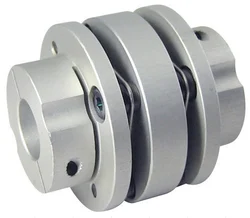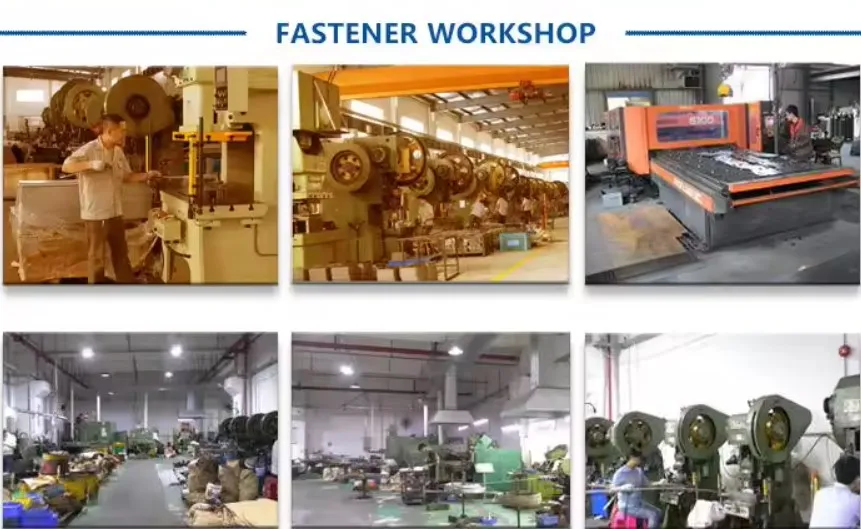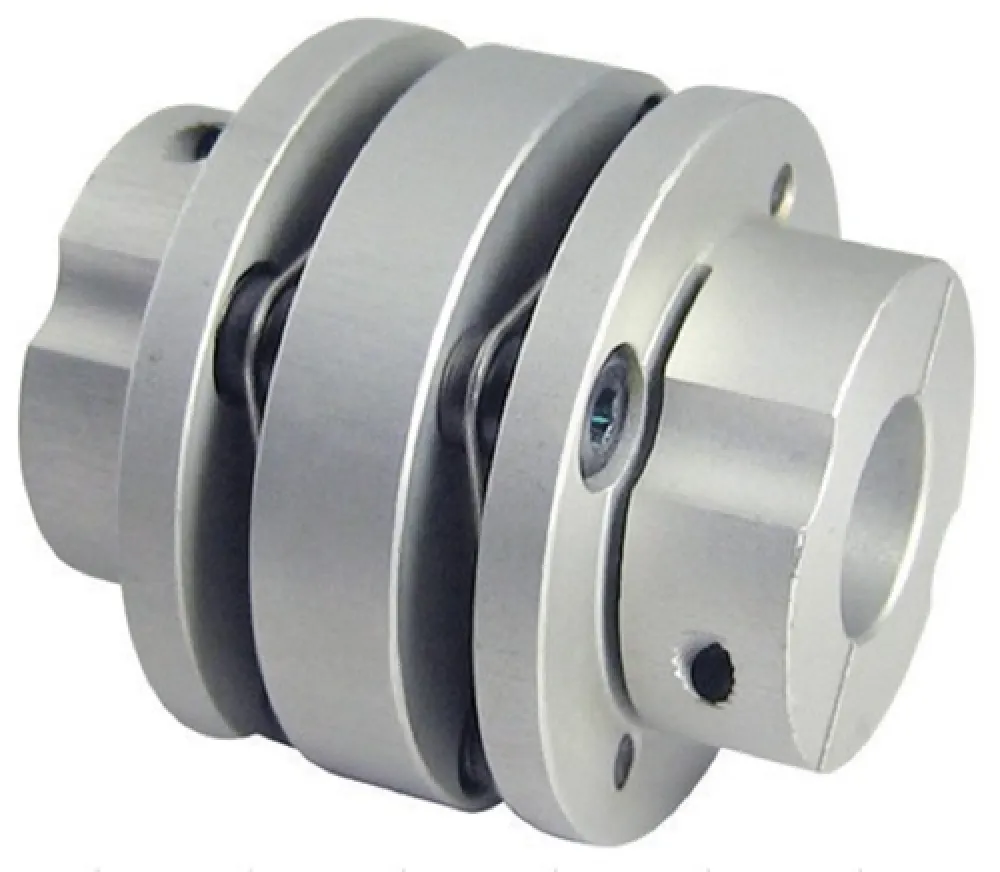Flexible Flange Coupling for Power Transmission
Introduction to Flexible Flange Couplings
Flexible flange couplings are pivotal components in power transmission systems, offering an efficient means to connect rotating shafts. Their unique capability to accommodate misalignments and absorb shocks makes them an indispensable element in many industrial applications.
Design and Construction
The design of flexible flange couplings typically involves two flanges connected by a flexible element. This structure allows for slight angular, parallel, and axial misalignments. The materials used can vary, but most often include high-strength alloys combined with flexible components made from rubber or synthetic polymers.
Working Principle
Flexible flange couplings function by transferring torque from one shaft to another while compensating for misalignments and vibrations. The flexibility in the coupling absorbs these inconsistencies, ensuring smooth and efficient power transmission.
Advantages of Flexible Flange Couplings

- Misalignment Compensation: They can handle misalignments between connected shafts, which reduces the risk of mechanical wear and tear.
- Shock Absorption: They absorb shocks and vibrations, protecting the machinery from unexpected stress.
- Noise Reduction: Their ability to dampen vibrations leads to a significant reduction in operational noise.
- Improved Efficiency: By providing smoother power transmission, they enhance the operational efficiency of machinery.
- Extended Equipment Life: The reduction in mechanical stresses directly contributes to a longer lifespan of connected equipment.
Applications in Various Industries
Flexible flange couplings are utilized across diverse industries such as automotive, aerospace, marine, and manufacturing. Their versatility and reliability make them suitable for a wide range of high-precision and heavy-duty applications.
Material Selection
The choice of materials for flexible flange couplings is critical. Commonly used materials include steel, aluminum, and composite polymers, each selected based on the specific requirements of torque, speed, and environmental conditions of the application.
Installation and Maintenance
Proper installation and regular maintenance are essential for the optimal performance of flexible flange couplings. Ensuring precise alignment during installation and conducting periodic inspections can prevent premature failures and extend the coupling¡¯s service life.
What are the Advantages of Flexible Coupling?

- Compensation for Misalignment: Flexible couplings can accommodate various types of misalignments, including angular, parallel, and axial, enhancing the longevity and efficiency of machinery.
- Vibration and Shock Absorption: They absorb vibrations and shocks, preventing damage to connected equipment and reducing noise levels.
- Ease of Installation: Flexible couplings are generally easier to install and require less precision in alignment compared to rigid couplings.
- Reduced Maintenance: Due to their ability to handle misalignments and absorb shocks, they often require less frequent maintenance.
- Versatility: Suitable for a wide range of applications and industries due to their adaptable nature.
What is the Difference Between Solid and Flexible Coupling?

- Misalignment Handling: Solid couplings require precise alignment and cannot accommodate misalignments, whereas flexible couplings can handle various misalignments.
- Shock and Vibration Absorption: Flexible couplings can absorb shocks and vibrations, protecting the machinery, whereas solid couplings transmit all forces directly.
- Installation Requirements: Solid couplings necessitate precise alignment during installation, which can be time-consuming, while flexible couplings allow for easier installation.
- Maintenance: Solid couplings may lead to increased maintenance due to their inability to handle misalignments, whereas flexible couplings often require less maintenance.
- Application Range: Flexible couplings are more versatile and suitable for various applications, including those with dynamic load conditions.
What is the Problem with Flexible Couplings?
Despite their numerous advantages, flexible couplings can present some challenges:
- Initial Cost: They can be more expensive compared to traditional rigid couplings.
- Complexity in Design: The design and selection process can be more complex due to the need to consider various factors such as misalignment, load, and environmental conditions.
- Potential for Deterioration: The flexible elements, such as rubber or polymers, can degrade over time, especially in harsh environments.
- Size Constraints: In high-torque applications, the size of the coupling required can be quite large, leading to space constraints.
Choosing the Right Flexible Flange Coupling
Selecting or customizing the appropriate flexible flange coupling involves several critical parameters and actual conditions:

- Torque Requirements: Determine the maximum and average torque that the coupling needs to transmit to ensure it can handle the load without failure.
- Misalignment Tolerance: Assess the types and magnitudes of misalignments (angular, parallel, axial) in the system to choose a coupling that can accommodate them.
- Operational Speed: Evaluate the rotational speed of the shafts to select a coupling that can operate efficiently at the required speed.
- Environmental Conditions: Consider the operating environment, including temperature, humidity, and exposure to chemicals or corrosive elements, which could affect the coupling material.
- Space Constraints: Ensure the selected coupling fits within the available space without causing interference with other components.
HZPT: Leading Manufacturer of High-Precision Couplings
HZPT, established in 2006, is a professional manufacturer specializing in the development and production of high-precision couplings, ball screw support units, motor brackets, and motion modules. Our product line includes servo motor couplings, stepper motor couplings, miniature motor couplings, and encoder couplings.
Our Advantages
- Advanced Technology: We employ cutting-edge technology in our design and manufacturing processes, ensuring our products meet the highest standards of precision and performance.
- In-House R&D Center: Our dedicated research and development center allows us to continually innovate and improve our product offerings to meet evolving market needs.
- Proprietary Processing and Testing Systems: We have established our own processing and testing systems, which ensure stringent quality control and consistency in all our products.
- ISO 9001:2015 Certification: Our commitment to quality is reflected in our ISO certification, which guarantees that our processes and products adhere to international quality standards.
- ROHS Compliance: Our products comply with ROHS standards, ensuring they are free from hazardous substances and safe for use in a wide range of applications.
Currently, we offer over 30 product lines that are widely used in electronics, solar energy, photovoltaic industries, machine tools, packaging, mold making, medical, printing, and various automated machinery. Our products have gained recognition and widespread use by top-tier customers globally, including in Japan, the United States, Germany, Israel, Malaysia, Singapore, and Taiwan.
We invite you to explore our range of flexible flange couplings and experience the superior quality and performance that HZPT offers. Partner with us for your power transmission needs and benefit from our technological expertise, reliable products, and exceptional customer service.